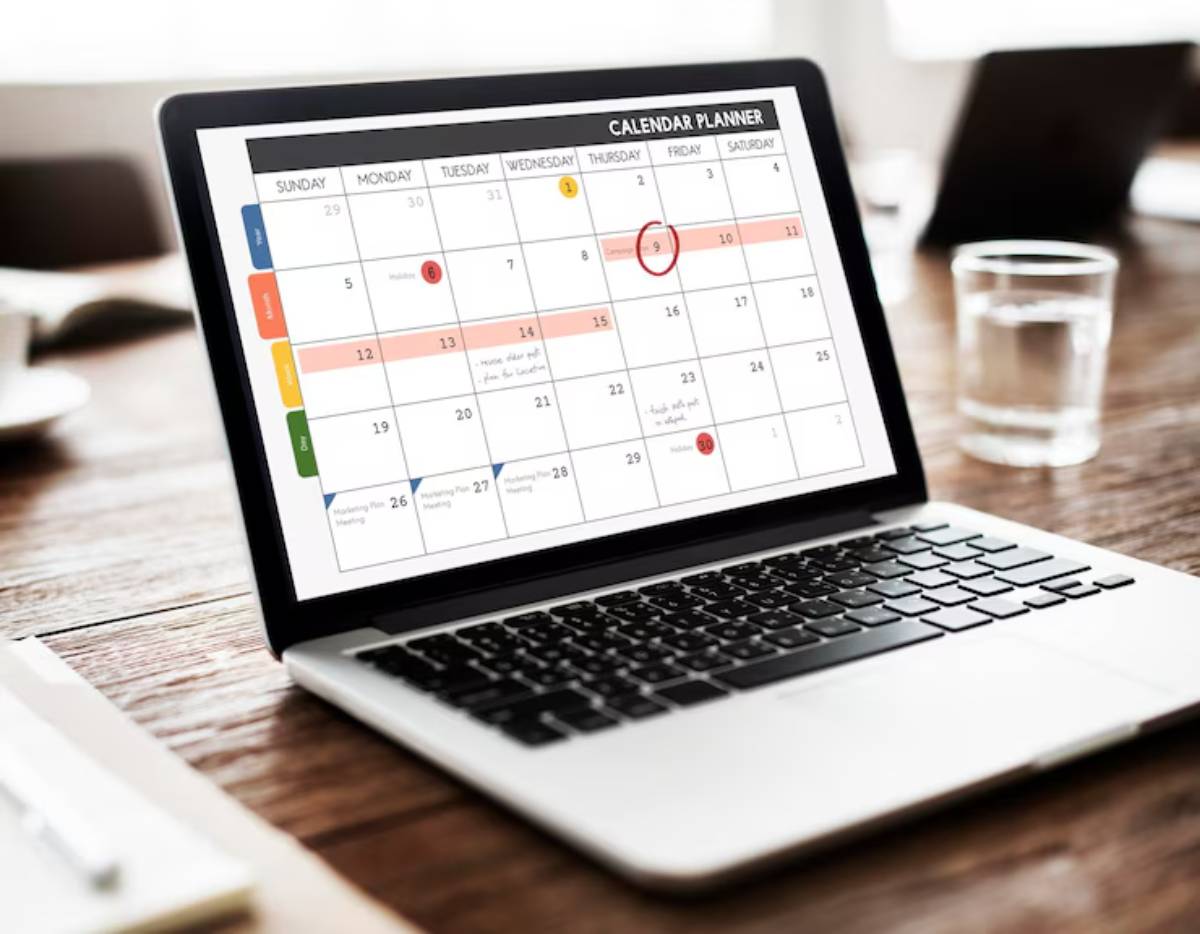
Time Blocking for Students: The Ultimate Guide
Drowning in Deadlines? Time Blocking Can Save You
You open your laptop with the best of intentions — only to jump from social media, to a YouTube video, to a half-finished assignment, and then… it’s bedtime. Sound familiar?
In student life, distractions are everywhere, and schedules can feel chaotic. That’s where time blocking comes in. This powerful method helps you take control of your day by assigning set periods to specific tasks — whether it’s lectures, revision, self-care, or even social time.
This ultimate guide is packed with student planner tips, proven strategies for time segmentation, and examples of how to make the time blocking method work for your lifestyle. Whether you’re trying to stay on top of coursework or balance study with a part-time job, time blocking can help you stop reacting and start intentionally managing your time.
What Is Time Blocking — And Why Should Students Use It?

The Concept
Time blocking is a time management technique that divides your day into blocks dedicated to specific tasks or activities. Instead of keeping an open to-do list, you decide when and for how long each task gets done.
Think of it like a class timetable — but you’re in charge.
Why It Works
Studies from the American Psychological Association show that task switching reduces productivity by up to 40%. Time blocking reduces decision fatigue, helps you focus on one thing at a time, and ensures you give time to what matters, instead of reacting to whatever pops up.
- Students juggling coursework and extracurriculars
- Those with inconsistent weekly schedules
- Anyone who wants more structure without losing flexibility
The Core Benefits of Time Blocking for Students
1. Improves Focus and Reduces Overwhelm

When you know exactly what to work on and when, you avoid that panicked “where do I even start?” feeling.
2. Boosts Productivity
Time blocking creates natural deadlines. You’re more likely to stay on task when you know you’ve got only 45 minutes to finish a section of that essay.
3. Helps Prioritise What Matters
You start with what’s most important, not what’s most urgent. This is the difference between proactive and reactive studying.
4. Builds in Rest and Recovery
A good time-blocked schedule includes downtime, social life, and breaks, preventing burnout before it starts.
How to Time Block Effectively as a Student
Let’s walk through a simple, step-by-step system to build your ideal time-blocked day or week.
1: Audit Your Time
Track your week for 2–3 days and notice:
- How much time classes and fixed commitments take
- Where your time leaks (hello, endless scrolling)
- When you feel most focused or fatigued
Use a digital calendar, bullet journal, or even a time tracker app like Toggl.
2: Identify Your Priorities
Ask yourself:
- What’s due this week?
- What tasks will move me closer to my academic goals?
- What non-negotiables (lectures, job shifts) need to be in the calendar?
Group tasks by type:
- Admin (emails, planning)
- Deep Work (essay writing, revising)
- Light Tasks (reading, organising notes)
- Self-care (exercise, meals, social time)
3: Design Your Time Segments
Time segmentation means creating repeatable blocks for similar tasks. This makes your day feel structured but not robotic.
Common Time Segments for Students:
- Morning focus (8:00–10:00 AM) : Best for deep work or revision
- Admin/light tasks (10:30–11:30 AM) : Respond to emails, file documents
- Lecture blocks (12:00–3:00 PM) : Include travel and prep time
- Break + reset (3:00–4:00 PM) : Movement, snacks, or downtime
- Evening session (5:00–7:00 PM) : Reading or lighter creative tasks
Keep breaks between long sessions — 10 to 15 minutes for every hour worked. If you’d rather zoom in on each study hour for deeper focus, an hour-by-hour plan might suit you better.
Sample Time Block Schedules for Students
A. Full-Time Student with Variable Classes
| Time | Task |
| 7:30–8:00 AM | Morning routine + review planner |
| 8:00–9:30 AM | Essay writing (deep work block) |
| 9:30–10:00 AM | Breakfast + break |
| 10:00–12:00 PM | Lecture |
| 12:00–1:00 PM | Lunch + light reading |
| 1:00–3:00 PM | Lab or group project |
| 3:00–3:30 PM | Break (walk or snack) |
| 3:30–5:00 PM | Revise lecture notes |
| 5:00–7:00 PM | Gym / Dinner / Social time |
| 7:00–8:00 PM | Flashcards or a light review |
B. Student with Part-Time Job (Evenings)
| Time | Task |
| 6:30–7:00 AM | Wake + morning prep |
| 7:00–9:00 AM | Core study session |
| 9:00–10:00 AM | Breakfast + admin tasks |
| 10:00–1:00 PM | Lectures or seminars |
| 1:00–2:00 PM | Lunch + mental break |
| 2:00–3:30 PM | Group study or library research |
| 4:00–10:00 PM | Job shift |
| 10:30–11:00 PM | Wind down + quick review |
Top Student Planner Tips for Time Blocking
1. Use a Digital Calendar for Flexibility

Google Calendar or Notion lets you:
- Colour code task types
- Drag and drop blocks
- Set recurring events (e.g. “Review notes” every weekday at 7 PM)
2. Pencil In “Buffer Zones”
Life happens. Leave 30-minute flex zones between major blocks so you’re not derailed by unexpected delays.
3. Batch Similar Tasks
Group tasks that use the same part of your brain. E.g., replying to emails, DMs, and updating documents can happen in one block.
4. Revisit Your Schedule Weekly
Time blocking isn’t a one-and-done. Check what worked, what didn’t, and replan every Sunday evening.
What If You Can’t Stick to Your Time Blocks?
You’re human. Some days just won’t go to plan — and that’s okay. The goal isn’t perfection; it’s intention.
Here’s how to recover:
- Don’t scrap the day. Re-block the next 4 hours or the next morning.
- Swap blocks if needed. If you’re too tired for deep work, do a lighter task.
- Keep non-negotiables (like class and food) as anchors.
- Reflect weekly and make adjustments.
Real-Life Student Examples
Lily – Psychology Undergraduate
Lily uses time blocking to balance lectures and lab time with personal therapy sessions. She schedules mental health check-ins and journaling as part of her weekly planner.
“Seeing ‘self-care’ in my calendar helped me stop feeling guilty for taking breaks. It’s part of the plan — not a distraction.”
Andre – Law Student + Intern
Andre breaks his week into ‘themed’ days: research-heavy on Mondays, revision on Wednesdays, and mock tests on Saturdays. He keeps all tasks within 90-minute blocks and avoids back-to-back heavy sessions.
“My calendar is like my second brain now. It holds everything so I don’t have to juggle it mentally.”
For a fully digital approach to time segmentation, Google Calendar offers some powerful tools to keep your schedule flexible and synced.
Mistakes to Avoid with Time Blocking
- Overloading your day. Leave white space!
- Being too rigid. Plans should adapt, not imprison you.
- Skipping breaks. Fatigue ruins focus — plan recovery.
- Time blocking your entire day. Start with just 4–6 hours per day to build the habit.
Conclusion: Time Blocking = Clarity + Confidence
Time blocking isn’t about squeezing more into your day — it’s about making space for what matters. For students, that means creating a flexible structure where learning, rest, and life coexist.
With the right strategy, time segmentation can help you get ahead on assignments, prep better for exams, and still enjoy your evenings guilt-free. Your planner becomes your partner, not your enemy.
So start small. Maybe block your mornings for study or reserve Sundays for planning. Within a few weeks, you’ll be thinking less about how to “find time” and more about how well you’re using it.
What’s the one thing you’d like to block time for this week? Leave a comment below — or share your favourite student planner tips and help someone else level up their routine!


